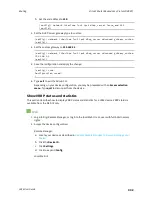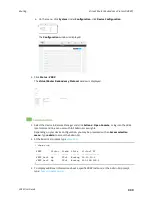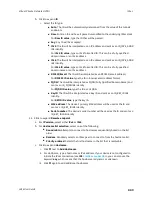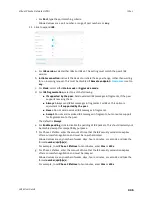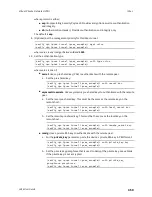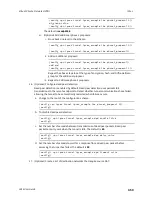
Virtual Private Networks (VPN)
IPsec
LR54 User Guide
444
d. Click to expand
ID
.
i. Select the ID type:
n
Auto
: The ID will be automatically determined from the value of the tunnels
endpoints.
n
Raw
: Enter an ID and have it passed unmodified to the underlying IPsec stack.
For
Raw ID value
, type the ID that will be passed.
n
Any
: Any ID will be accepted.
n
IPv4
: The ID will be interpreted as an IPv4 address and sent as an ID_IPV4_
ADDR IKE identity.
For
IPv4 ID value
, type an IPv4 formatted ID. This can be a fully-qualified
domain name or an IPv4 address.
n
IPv6
: The ID will be interpreted as an IPv6 address and sent as an ID_IPV6_
ADDR IKE identity.
For
IPv6 ID value
, type an IPv6 formatted ID. This can be a fully-qualified
domain name or an IPv6 address.
n
RFC822/Email
: The ID will be interpreted as an RFC822 (email address).
For
RFC822 ID value
, type the ID in internet email address format.
n
FQDN
: The ID will be interpreted as FQDN (Fully Qualified Domain Name) and
sent as an ID_FQDN IKE identity.
For
FQDN ID value
, type the ID as an FQDN.
n
KeyID
: The ID will be interpreted as a Key ID and sent as an ID_KEY_ID IKE
identity.
For
KEYID ID value
, type the key ID.
n
MAC address
: The device's primary MAC address will be used as the ID and
sent as a ID_KEY_ID IKE identity.
n
Serial number
: The device's serial number will be used as the ID and sent as a
ID_KEY_ID IKE identity.
21. Click to expand
Policies
.
Policies define the network traffic that will be encapsulated by this tunnel.
a. Click
to create a new policy.
The new policy configuration is displayed.



